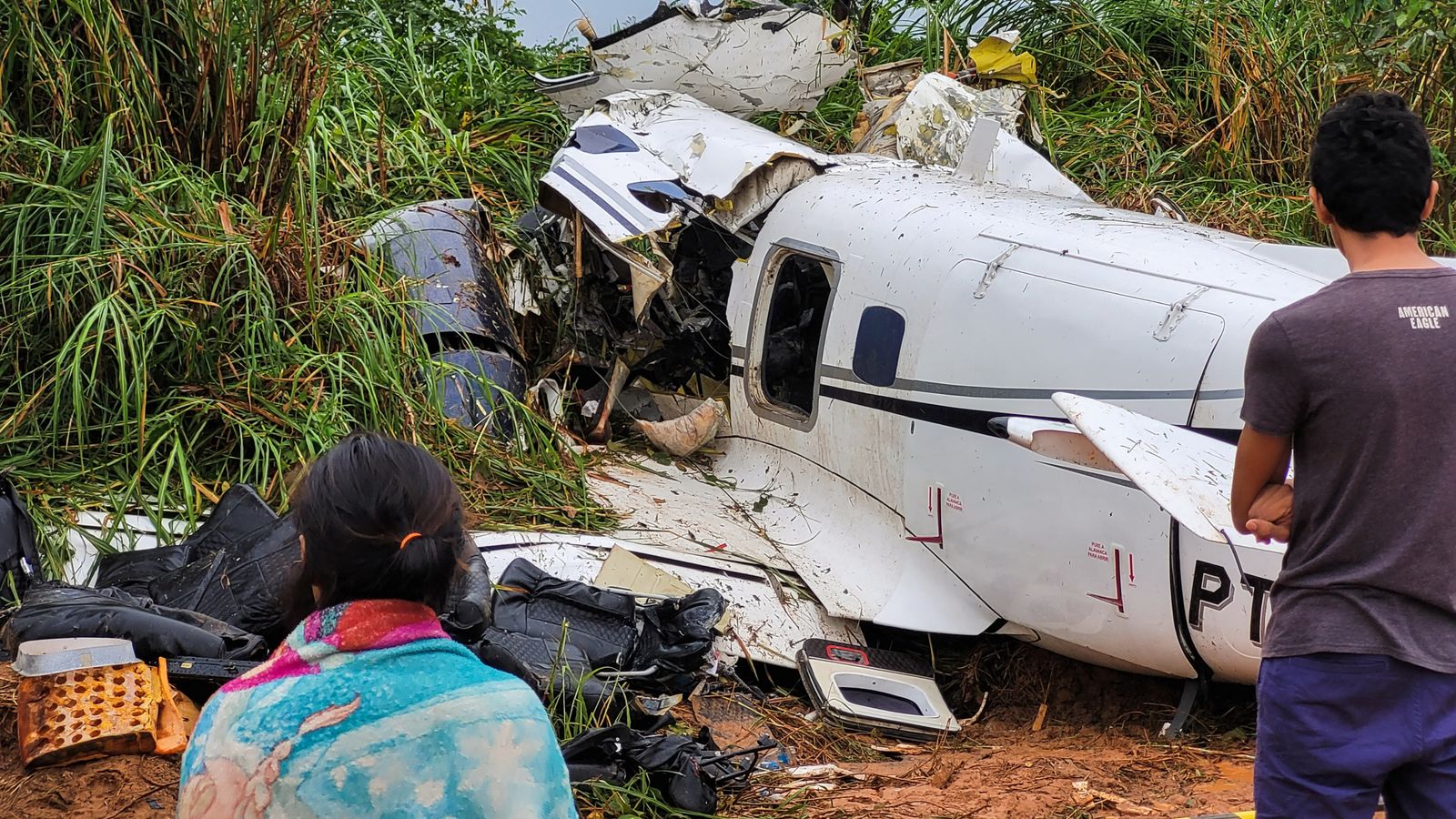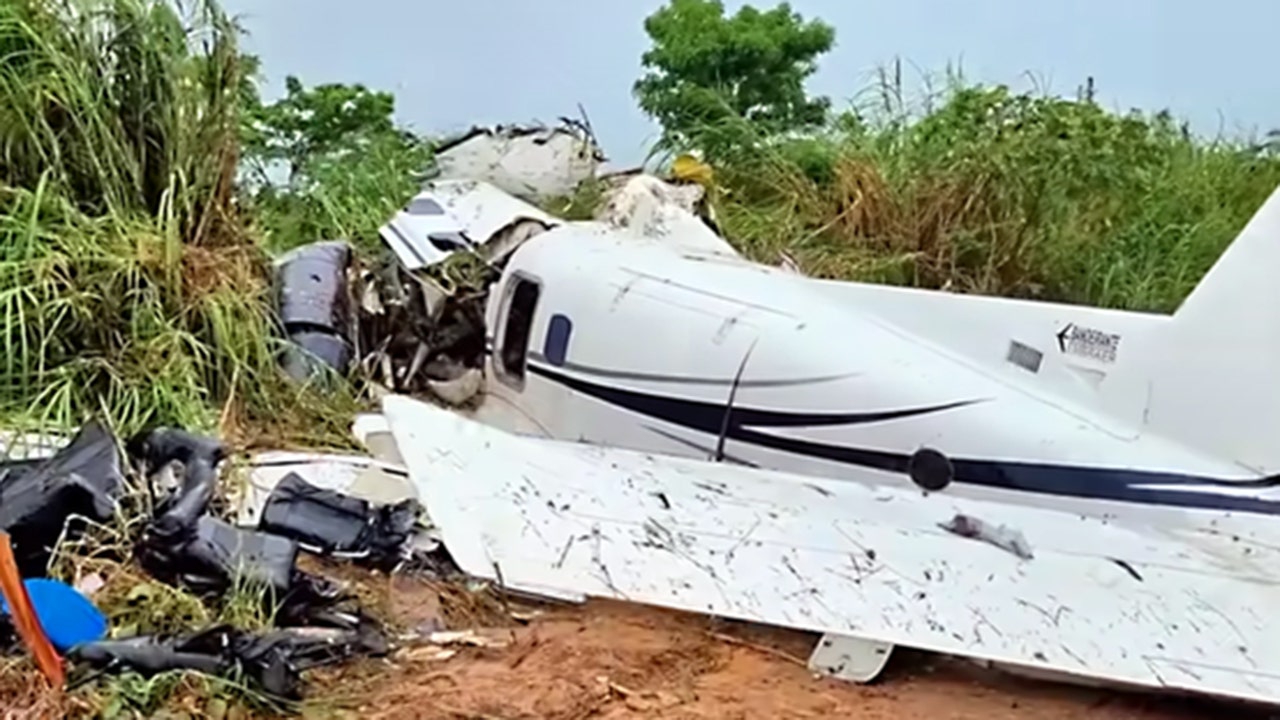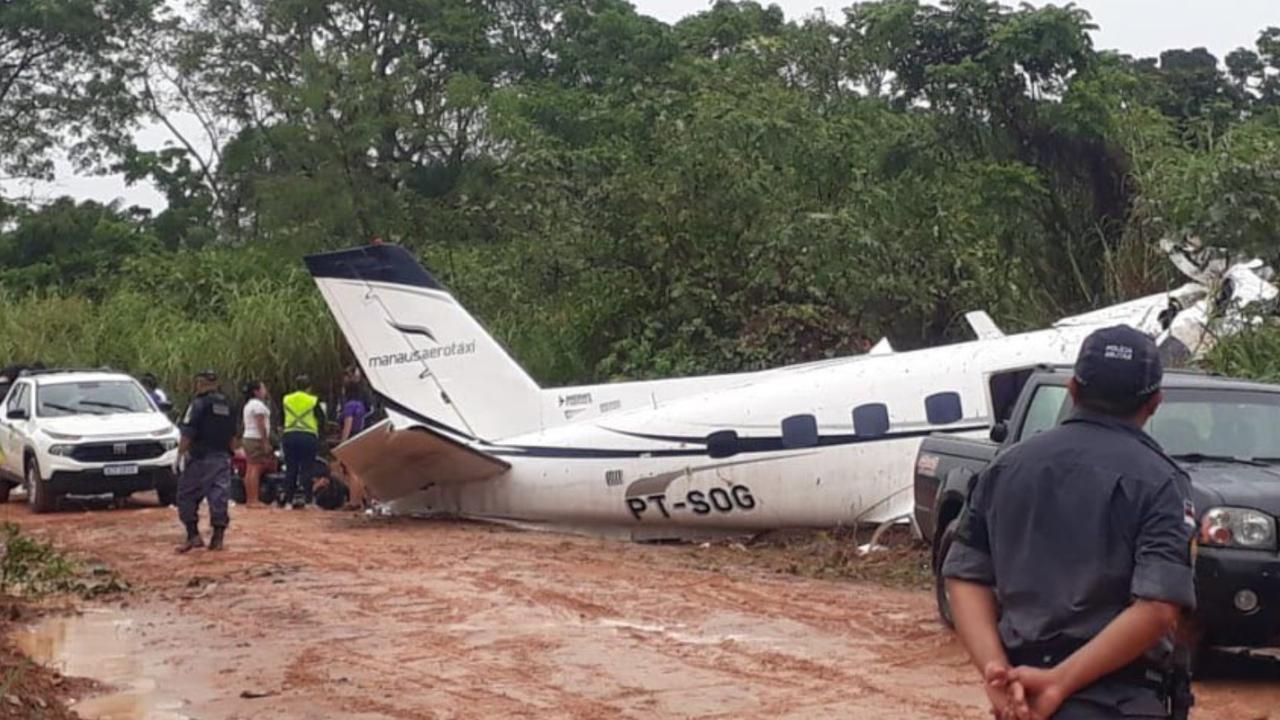History of Plane Crashes in Brazil: Plane In Brazil Crash

Brazil’s aviation history is intertwined with tragic incidents, marking a period of significant advancements and challenges in the country’s air travel landscape. These crashes have not only left an indelible mark on the nation’s collective memory but have also served as catalysts for crucial safety improvements and a heightened awareness of the risks inherent in air travel.
Timeline of Significant Plane Crashes
The following timeline highlights some of the most significant plane crashes in Brazil’s history, each leaving a lasting impact on the nation’s aviation industry:
- 1946: A Lockheed Constellation aircraft operated by Panair do Brasil crashed near Rio de Janeiro, killing 23 passengers and crew members. This incident, attributed to pilot error, raised concerns about safety standards and led to investigations into flight procedures and crew training.
- 1959: A Douglas DC-3 aircraft operated by Cruzeiro do Sul crashed near São Paulo, killing 42 people. The crash, attributed to mechanical failure, led to stricter maintenance regulations and inspections for aircraft operating in Brazil.
- 1962: A Varig Boeing 707 crashed near Rio de Janeiro, killing 99 people. The crash, attributed to a combination of pilot error and mechanical failure, resulted in the implementation of new air traffic control systems and the introduction of more stringent pilot training programs.
- 1973: A Varig Boeing 707 crashed in the Andes Mountains, killing 112 people. The crash, attributed to a combination of pilot error and mechanical failure, led to the development of new safety protocols for aircraft operating in mountainous terrain.
- 1982: A Varig Boeing 737 crashed near São Paulo, killing 137 people. The crash, attributed to a combination of pilot error and mechanical failure, led to the implementation of new regulations regarding aircraft maintenance and crew training.
- 1989: A Transbrasil Boeing 737 crashed near São Paulo, killing 137 people. The crash, attributed to pilot error, led to the development of new safety protocols for aircraft operating in high-traffic areas.
- 1996: A TAM Airlines Fokker 100 crashed near São Paulo, killing 99 people. The crash, attributed to pilot error, led to the implementation of new regulations regarding pilot training and flight procedures.
- 2007: A TAM Airlines Airbus A320 crashed at São Paulo’s Congonhas Airport, killing 199 people. The crash, attributed to a combination of pilot error and runway conditions, led to the closure of the runway for extensive repairs and the implementation of new safety protocols for aircraft operating at the airport.
Causes and Contributing Factors to Plane Crashes in Brazil
The investigation into plane crashes in Brazil often reveals a complex interplay of factors, ranging from pilot error and mechanical failure to adverse weather conditions and, in some cases, acts of terrorism. Understanding these causes is crucial for developing effective safety measures and mitigating future risks.
Pilot Error
Pilot error is a significant contributor to plane crashes worldwide, and Brazil is no exception. This can encompass a range of situations, including:
- Loss of situational awareness: Pilots may fail to recognize critical information or respond appropriately to changing circumstances, leading to accidents.
- Improper aircraft handling: This can include mistakes in takeoff, landing, or maneuvering, resulting in loss of control or collisions.
- Failure to follow procedures: Deviation from established protocols can lead to catastrophic consequences.
- Fatigue and workload: Excessive fatigue or high workload can impair pilot judgment and reaction time.
Mechanical Failure
Mechanical failure can also lead to crashes. While modern aircraft are designed with high safety standards, mechanical issues can arise:
- Engine failure: This can result from faulty maintenance, design flaws, or unforeseen circumstances.
- Structural failure: Cracks, fatigue, or improper repairs can compromise the structural integrity of the aircraft.
- Hydraulic system failure: This can affect the aircraft’s control surfaces and braking systems.
- Electrical system failure: Malfunctions in the electrical system can disrupt communication, navigation, and other critical functions.
Weather Conditions
Brazil’s diverse climate and geography present unique challenges for aviation. Weather-related factors can contribute to accidents:
- Severe thunderstorms: Turbulence, lightning, and heavy rainfall can pose significant hazards to aircraft.
- Low visibility: Fog, haze, and rain can reduce visibility and impair pilots’ ability to navigate.
- Wind shear: Sudden changes in wind speed and direction can cause aircraft to lose control.
Air Traffic Control and Aviation Regulations
Effective air traffic control and stringent aviation regulations are essential for maintaining safe air travel.
- Air traffic control: Air traffic controllers play a vital role in coordinating aircraft movements and preventing collisions. However, human error or communication breakdowns can contribute to accidents.
- Aviation regulations: These regulations set standards for aircraft maintenance, pilot training, and operational procedures. Compliance with these regulations is crucial for ensuring safety.
Maintenance Practices
Proper maintenance is crucial for preventing mechanical failures.
- Maintenance schedules: Regular inspections and maintenance according to established schedules are essential for identifying and addressing potential issues.
- Quality control: Ensuring that maintenance work is performed to the highest standards is critical for maintaining aircraft safety.
- Spare parts: Using genuine and certified spare parts is vital for ensuring the reliability of aircraft components.
Pilot Training, Plane in brazil crash
Thorough pilot training is essential for developing the skills and knowledge necessary for safe flight operations.
- Flight simulators: Simulators provide realistic training environments for pilots to practice emergency procedures and develop their skills in various scenarios.
- Continuing education: Pilots must undergo regular training and updates to stay abreast of the latest aviation technologies and safety protocols.
- Flight experience: Accumulating sufficient flight hours and experience is crucial for pilots to gain the necessary skills and judgment for safe operations.
Airport Infrastructure
The quality of airport infrastructure plays a significant role in ensuring safe air travel.
- Runway conditions: Well-maintained runways are essential for safe takeoffs and landings.
- Navigation aids: Accurate and reliable navigation aids are critical for guiding aircraft safely to their destinations.
- Emergency services: Prompt and efficient emergency services are essential for responding to accidents and minimizing casualties.
Safety Measures and Prevention Strategies

Brazil’s aviation authorities have implemented a comprehensive set of safety measures to minimize the risk of plane crashes. These measures aim to ensure the highest standards of air travel safety, encompassing pilot training, aircraft inspections, and airport security protocols.
Pilot Training and Certification
The Brazilian National Civil Aviation Agency (ANAC) mandates rigorous training and certification requirements for pilots. This includes theoretical and practical training, flight simulation, and recurrent training to maintain proficiency. The training curriculum emphasizes safety procedures, risk management, and emergency response protocols.
Aircraft Inspections and Maintenance
ANAC enforces strict aircraft inspection and maintenance regulations to ensure the airworthiness of all aircraft operating in Brazil. Regular inspections are conducted by certified technicians to identify potential defects and ensure that aircraft meet safety standards. Maintenance programs are meticulously followed to prevent mechanical failures and ensure the continued safe operation of aircraft.
Airport Security Protocols
Brazilian airports adhere to stringent security protocols to prevent unauthorized access and potential threats. These protocols include passenger screening, baggage inspection, and security patrols. The implementation of advanced technology, such as X-ray scanners and metal detectors, further enhances security measures.
Effectiveness of Safety Measures
The safety measures implemented by Brazilian aviation authorities have significantly contributed to a reduction in the number of plane crashes. The country has seen a steady decline in air accident rates over the past decades, demonstrating the effectiveness of these safety protocols. However, continuous efforts are needed to maintain and improve safety standards.
Potential Improvements to Safety Regulations and Practices
While Brazil has made significant progress in aviation safety, there are always areas for improvement. Further enhancing safety regulations and practices can be achieved through the following initiatives:
- Enhanced Pilot Training: Incorporating advanced simulation technology and training programs that focus on specific scenarios, such as weather-related emergencies and human factors, can further enhance pilot preparedness.
- Data-Driven Safety Analysis: Implementing data-driven analysis techniques to identify trends and patterns in air accidents can help pinpoint specific areas where safety improvements are needed.
- Advanced Technology Integration: Exploring the integration of advanced technologies, such as collision avoidance systems and automated flight control systems, can further enhance safety and reduce the risk of human error.
- Increased Collaboration: Fostering collaboration between aviation authorities, airlines, and industry stakeholders to share best practices and promote a culture of safety can lead to continuous improvement in safety standards.
Plane in brazil crash – The news of the plane crash in Brazil echoed through the airwaves, a stark reminder of life’s fragility. As the world mourned the loss, a different kind of drama unfolded across the ocean, where the rasmussen presidential poll tracked the fluctuating tides of public opinion, a testament to the enduring human quest for power and leadership.
In the face of such contrasting events, one thing remained constant: the human spirit, forever seeking to rise above tragedy and navigate the complex currents of our shared existence.
The news of a plane crash in Brazil echoes through the bustling streets, a stark reminder of the fragility of life. The crash, while tragic, serves as a poignant counterpoint to the vibrant energy of Sao Paulo Brazil , a city where dreams take flight and ambitions soar.
Yet, even amidst the city’s relentless forward momentum, the shadow of the crash lingers, a solemn reminder of the unpredictable nature of fate.

